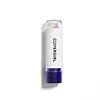What's inside
What's inside
 Key Ingredients
Key Ingredients

 Benefits
Benefits

 Concerns
Concerns

 Ingredients Side-by-side
Ingredients Side-by-side

Mica
Cosmetic ColorantCI 77163
Cosmetic ColorantPolymethyl Methacrylate
Zinc Stearate
Cosmetic ColorantTriethoxycaprylylsilane
Sodium Dehydroacetate
PreservativeMethylparaben
PreservativeSilk Powder
Skin ConditioningPropylparaben
PreservativeGlycine Soja Seed Extract
Skin ConditioningTocopheryl Acetate
AntioxidantPantothenic Acid
Skin ConditioningRetinyl Palmitate
Skin ConditioningAscorbic Acid
AntioxidantTitanium Dioxide
Cosmetic ColorantIron Oxides
CI 75470
Cosmetic ColorantSqualane
EmollientPPG-2 Myristyl Ether Propionate
EmollientEthylhexyl Hydroxystearate
EmollientTriisocetyl Citrate
EmollientTriphenyl Trimethicone
EmollientEuphorbia Cerifera Wax
Ozokerite
Emulsion StabilisingChamomilla Recutita Flower Extract
MaskingTocopheryl Acetate
AntioxidantAscorbyl Palmitate
AntioxidantPanax Ginseng Root Extract
EmollientC10-18 Triglycerides
EmollientPropylparaben
PreservativeCopernicia Cerifera Wax
Titanium Dioxide
Cosmetic ColorantIron Oxides
Mica
Cosmetic ColorantSqualane, PPG-2 Myristyl Ether Propionate, Ethylhexyl Hydroxystearate, Triisocetyl Citrate, Triphenyl Trimethicone, Euphorbia Cerifera Wax, Ozokerite, Chamomilla Recutita Flower Extract, Tocopheryl Acetate, Ascorbyl Palmitate, Panax Ginseng Root Extract, C10-18 Triglycerides, Propylparaben, Copernicia Cerifera Wax, Titanium Dioxide, Iron Oxides, Mica
Alternatives
Ingredients Explained
These ingredients are found in both products.
Ingredients higher up in an ingredient list are typically present in a larger amount.
Mica is a naturally occurring mineral used to add shimmer and color in cosmetics. It can also help improve the texture of a product or give it an opaque, white/silver color.
Serecite is the name for very fine but ragged grains of mica.
This ingredient is often coated with metal oxides like titanium dioxide. Trace amounts of heavy metals may be found in mica, but these metals are not harmful in our personal products.
Mica has been used since prehistoric times throughout the world. Ancient Egyptian, Indian, Greek, Roman, Aztec, and Chinese civilizations have used mica.
Learn more about MicaPropylparaben is a preservative and is a paraben with antifungal and antimicrobial properties.
This ingredient can be naturally found in plants and insects, but most of it is synthetically manufactured for human use. In cosmetics, it is usually created by reacting para-aminobenzoic acid and propanol (an alcohol).
You can usually find this ingredient in water-based products.
Parabens have come under controversy due to the claim they are hormone disruptors. Studies show conflicting results. We recommend speaking with a professional if you have any concerns.
Propylparaben is commonly found in food, medicine, and cosmetics.
Learn more about PropylparabenTitanium dioxide is a mineral UV filter widely used in sunscreens and cosmetics.
It is one of only two UV filters officially classified as “mineral” by regulatory agencies, the other being zinc oxide.
Titanium dioxide provides broad-spectrum protection mostly in the UVB and UVAII range, with some protection in the UVAI range.
While its UVA protection isn’t as strong as zinc oxide’s, the difference is minor.
A common myth is that mineral UV filters reflect UV light. However, modern research shows titanium dioxide absorbs UV radiation like chemical filters (~95% absorption & 5% reflection).
Thanks to its non-irritating nature, titanium dioxide is suitable for sensitive, acne-prone, or redness-prone skin. It is unlikely to cause "eye sting" like other sunscreen ingredients.
A major drawback of this ingredient is its white cast and thick texture. This is why mineral sunscreens often leave a white cast and are less cosmetically elegant than chemical/hybrid sunscreens.
To improve white cast and spreadability, micronized or nano-sized titanium dioxide is often used.
There are ongoing concerns surrounding nano-titanium oxide's impact on marine ecosystems.
There is no conclusive evidence that any form of titanium oxide (or any other sunscreen ingredients) will cause harm to marine ecosystems or coral reefs. The science is still developing but many consumers are keeping a close eye on this issue.
Please note, many destinations have reef-safety sunscreen rules. For instance, the U.S. Virgin Islands advises all visitors to use non-nano mineral sunscreens.
Nano mineral sunscreens once raised safety concerns about absorption into skin.
Extensive research has shown that they do not penetrate healthy or damaged skin; they remain safely on the surface and the top layer of dead skin (stratum corneum).
You'll likely find titanium dioxide bundled with alumina, silica, or dimethicone. These ingredients help make titanium dioxide highly photostable; this prevents it from interacting with other formula components under UV light.
Learn more about Titanium DioxideTocopheryl Acetate is AKA Vitamin E. It is an antioxidant and protects your skin from free radicals. Free radicals damage the skin by breaking down collagen.
One study found using Tocopheryl Acetate with Vitamin C decreased the number of sunburned cells.
Tocopheryl Acetate is commonly found in both skincare and dietary supplements.
Learn more about Tocopheryl AcetateThis ingredient is a combination of red, black, and yellow iron oxide pigments. This combination of colors is usually found in foundation, because it results in a "skin" color.